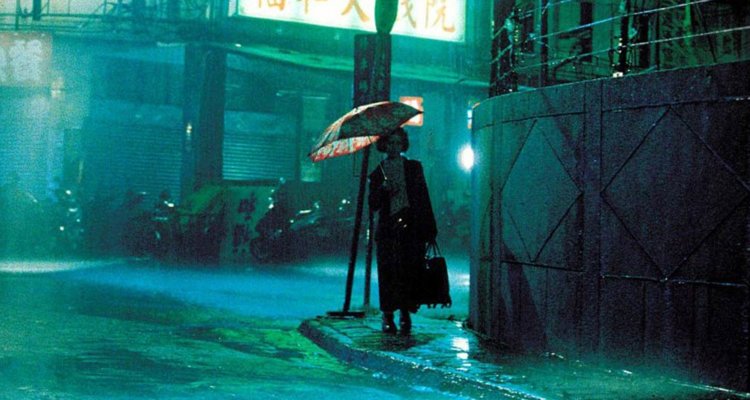Tsai Ming-liang makes movies that so perfectly speak to our modern day communal, lived experiences; yet the three films I’m going to be talking about were made in times ranging from the early 90s to early 2000s. This just speaks to the power of his work, since it can still be so relevant to our lives, yet it was made before I was even born. Tsai Ming-liang is a Malaysian-Taiwanese filmmaker who is considered one of the best “second new wave” directors in Taiwanese cinema. He has made many films but the three I’m covering are The Hole, Goodby Dragon Inn, and Rebels of the Neon God. I immediately became infatuated with his work from the latter of the films mentioned above and couldn’t stop watching his work after that. Thematically all three of these films really tie together and provide a beautiful look into the world we live in by encouraging the audience to take time to analyze the world around them in order to better live within it.
If many of us were to look outside our window at night we’d see darkened city streets littered with trash and broken dim light radiating from passing cars and buildings lining the streets. The feeling of this empty and cold environment is expressed no better than in Tsai Ming-liang’s work, particularly in his film Rebels of the Neon God. The story covers a young man who becomes obsessed with and stalks two friends he comes across on the streets of Taipei. This film completely envelops you in the desolate world of city streets at night filled with crime, drama, and romance. Throughout most of the film, there is a strong feeling of oppressive emptiness, and the world of the characters feels cold and unrelenting. But then, at what I view as the most crucial scene in the movie, a piece of humanity shines through. A character has been violently beaten up and his friend jumps to his rescue and tenderly cares for him. With the whole film being so impersonal, this one moment of shared love jumps out. It highlights the power of human connection in this world we live in that often feels lonely and broken.

Goodbye, Dragon Inn also has a scene very similar to this. The film follows the events unfolding as a historical theater shows its final film before closing. Much like Rebels of the Neon God it is filled with very desolate shots of empty and depraved city life at night. There is close to no dialogue throughout the entirety of the film and not much in the way of human connection. Towards the end of the film though, two old men are standing outside the theater, and they recognize each other from their pasts and exchange some pleasantries. Though this scene may seem unimportant it has loads of significance in the context of the film. This is the only relatively prolonged scene of human interaction, so it feels so powerful to finally witness it after the hour that’s gone by devoid of it. Ultimately, this scene reminds the viewer of the profound impact of human interaction in an environment that can be filled with so much isolation and solitude.

Perhaps the most straightforward of Tsai Ming-liang’s expression of this idea is his film The Hole. This piece of work will likely be the most poignant of his for modern viewers, as it takes place during a pandemic that has thrown people into quarantine. I’m sure we are all too familiar with the form of isolation felt in a situation like this, where the very human connection we thrive for is a danger to our health. This film follows two characters who slowly fall in love with each other in the confines of a bleak apartment complex during a pandemic. They connect over the fact that they live directly above each other, and a hole has formed in the floor of the upper room, connecting the two inhabitants with this small space in the ceiling. The hole represents that innate desire to connect with others amidst an isolating and cold situation. One of the lovers ends up contracting the disease and one of the final shots of the film shows her being carried out of her disease-ridden room into the room above belonging to her lover through the hole in the ceiling. In a sense, showing the salvation one achieves in the powerful connections one makes with others. It almost appears as if she is transcending up to heaven as she is lifted through the hole. Showing that in the face of very isolating events, the answer lies in breaking that isolation in any way one can because it is through human connection that we gain significance and fulfillment.

As Initially stated, these films help us analyze the world around us. We can so easily relate the environments presented in Tsai Ming-liang’s work, as they show the desolate and lonely city streets that we unfortunately are much too familiar with. Yet in presenting us with this mirror with which we can view our world, he reminds us of the power of the human connection found in these spaces. Even if they may feel insignificant, they hold great power and for that I am very grateful for his work. I would highly recommend you check out the films mentioned, as maybe you too will realize the importance of connection within the often-isolating cities in which we reside.
